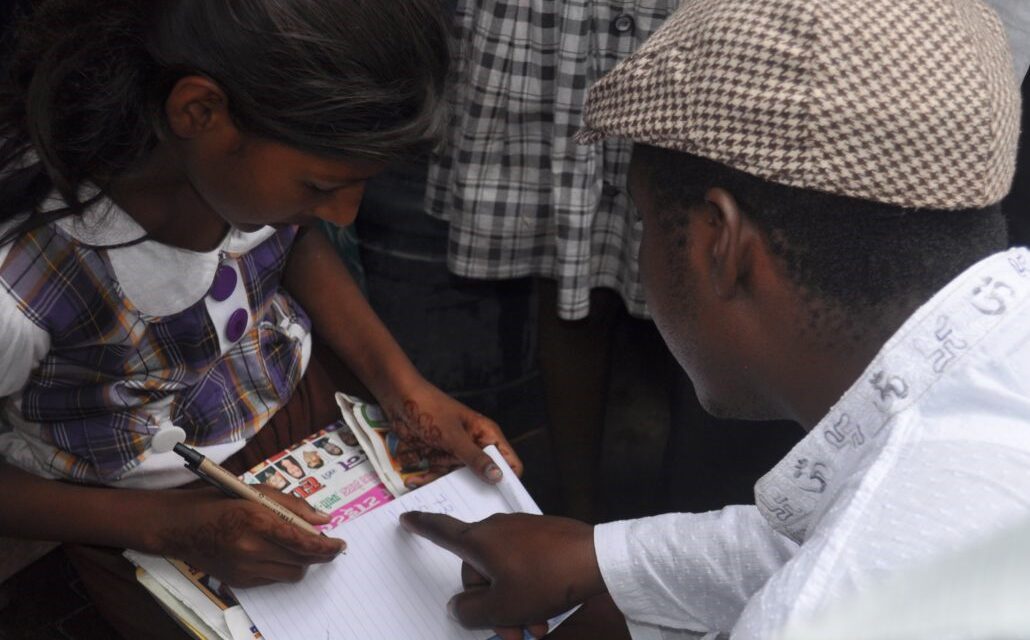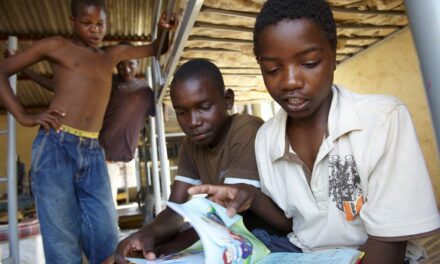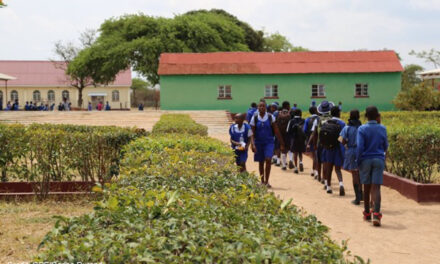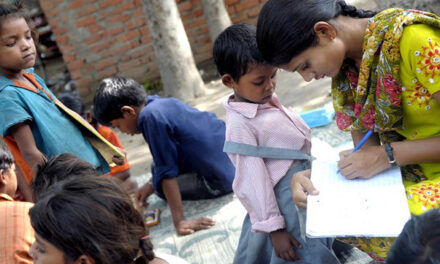This blog was written by Laura Cashman, Doctoral Student, Faculty of Education, University of Cambridge; Dr. Suman Bhattacharjea, Director of ASER Centre; and Dr. Ricardo Sabates, Reader in Education at the University of Cambridge and member of the REAL Centre. It was originally published on the PAL Network website on 16 April 2020.
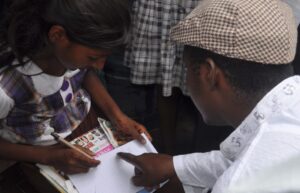 Studies show that a child’s education can be directly influenced by their parent’s understanding of their past and current educational attainment. However, research on parental perceptions and subsequent involvement in their children’s education, particularly in the Global South, is lacking. Researchers from the University of Cambridge, together with partners in India, are looking at some of the potential drivers of parental involvement in children’s education in rural India, as well as how community-based accountability relationships can raise learning outcomes for the most disadvantaged primary-school learners. Our research seems relevant to the current situation in which millions of children in rural India are likely to be learning at home during the COVID-19 crisis.
Studies show that a child’s education can be directly influenced by their parent’s understanding of their past and current educational attainment. However, research on parental perceptions and subsequent involvement in their children’s education, particularly in the Global South, is lacking. Researchers from the University of Cambridge, together with partners in India, are looking at some of the potential drivers of parental involvement in children’s education in rural India, as well as how community-based accountability relationships can raise learning outcomes for the most disadvantaged primary-school learners. Our research seems relevant to the current situation in which millions of children in rural India are likely to be learning at home during the COVID-19 crisis.
Led by the REAL Centre at the University of Cambridge together with the Pratham Education Foundation and ASER Centre, the project: Can schools’ accountability for learning be strengthened from the grassroots? (2018-2021)(1) explores how children’s learning in the classroom can be improved by community-based interventions. As part of this study, the researchers hope to shed further light on how parental perceptions of children’s learning can influence parental involvement in education. This seems to be a relevant topic today under the current COVID-19 crisis, as millions of children in rural India are expected to be learning in their homes, potentially under the guidance of parents or other family members.
Our study is situated in Sitapur district in rural Uttar Pradesh, India. All villages in Sitapur district with at least two government schools were part of the sampling frame. A random sample of 400 villages was obtained from this sampling frame. All government schools in the sampled villages were selected as part of the study. In each selected school, 10 children from each primary grades 2, 3 and 4 were randomly selected, giving a maximum of 30 children per school. The final sample contains 24,060 children. 53% of the sample are girls.
The main carer, in most cases (53%) the mother, was interviewed about their perceptions, attitudes and actions towards the child’s schooling and learning. Parents were first asked if they felt they can support children at home with learning. Overwhelmingly, 85% of the parents indicated that they felt they can support their child’s studies at home. Many of these parents (77%) indicated that they have time to engage with their children’s learning at home (and this is before the current crisis). Most parents (91%) indicated that they worry when their children are unable to read a simple text or recognise numbers and most parents (92%) asked their children to study hard. Therefore, parents in rural communities are keen to support their children’s learning.
Moving from actual perceptions to actions, we also found important information which is helpful during the current crisis. 56% of parents reported that there is someone in the house who is able to help children at home with their studies (again, this is actually before the crisis). Little over two-third of parents (68%) reported that they are able to help their children and nearly one third of households (30%) reported that a sibling is able to help younger children. It is also important that under the same dwelling many generations and family members live together and 8% of parents reported that other family members are also able to help with children’s learning. Although there is potential to unpack the support that children can obtain at home, there are also some challenges faced by parents. We find that 66% of parents checked the child’s notebook, and only 16% helped children with their homework. In terms of additional learning activities, only 18% of parents have occasionally told or read a story to their children. However, this study shows that there is a positive relationship between wealth, as measured through an asset index, and parental involvement which disproportionately affects ‘poorer’ parents within this sample. For instance, asset ‘poorer’ parents are 17 percentage points less likely to indicate that there is someone at home to help the child with their studies, 12 percentage points less likely to check their child’s notebook or textbook and 9 percentage points less likely than the wealthiest in the sample to have visited the school this session.
We use multiple regression models to estimate the underlying associations between parental involvement, parental perceptions about the child’s learning, and the socioeconomic status of the household. We also found that more affluent parents are more likely to become involved in their children’s learning, as they themselves tend to be more educated and to recognise their child’s learning gaps, whereas less affluent and less educated parents may have more challenges supporting their child’s learning. Relatively richer parents, in rural areas of Uttar Pradesh, tend to have children who outperform their peers in basic academic skills. In line with this, richer parents are likely to correctly predict that their children are learning, probably because they are themselves more educated. These parents then tend to become more involved with their children’s learning, generating a positive cycle of learning support for children. But poorer families may not have the knowledge to recognise whether their children are learning or the resources to support them. In the current COVID-19 situation, we need to think carefully about differential support which can be provided at home, as well as socioeconomic inequalities, which trigger different mechanism for parental support at home. Our study demonstrates the willingness of parents to support their children’s learning, the question is how best to support these parents so that they can turn such willingness into action.
Note (1): Funding for this project comes from the UK Economic and Social Research Council (ES/P005349/1) and from Mars Wrigley Company Foundation.

